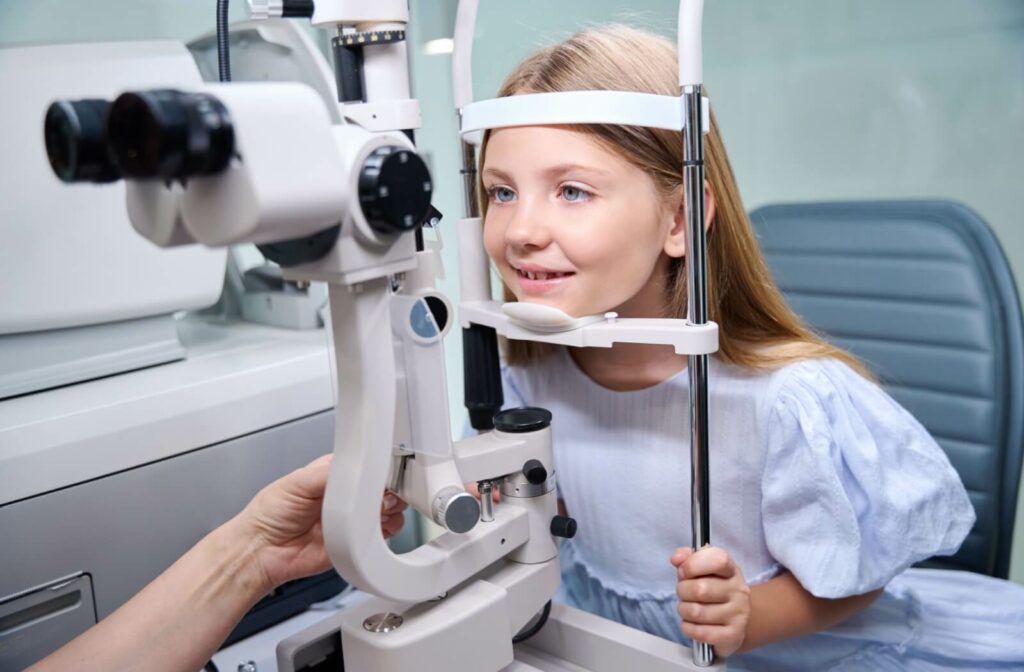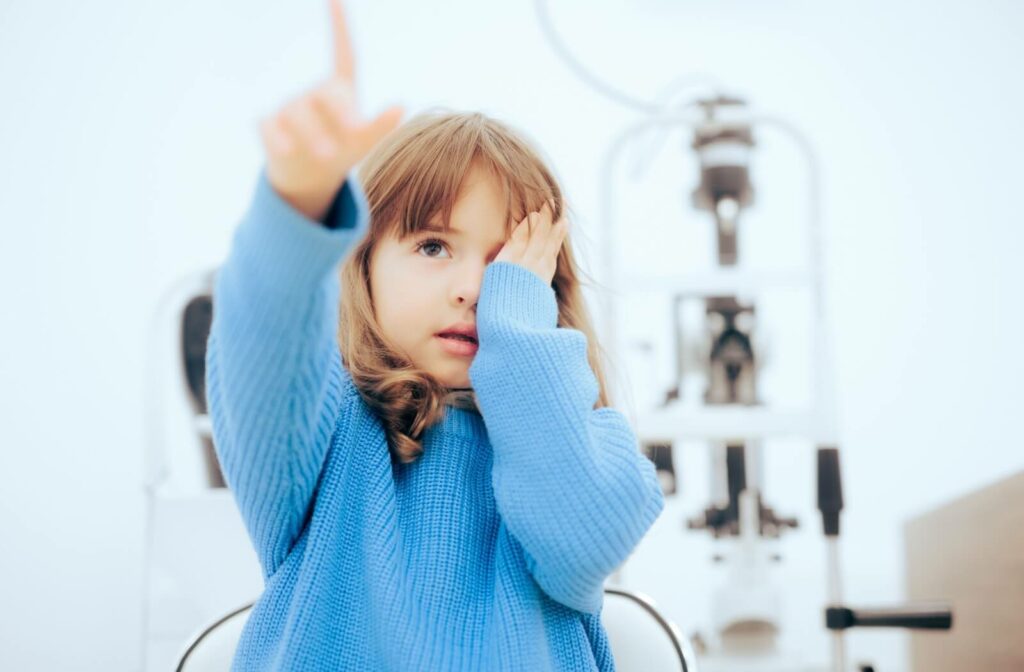Nearsightedness, clinically known as myopia, is a common refractive error that typically develops in a child’s early school years. This condition isn’t just about blurry vision; myopia can lead to a higher risk of all kinds of eye conditions later on in life. This is why it’s essential to think about myopia control for your child—it offers a way to invest in your child’s future eye health while still giving them the gift of clear vision.
There are 5 ways to slow myopia progression in kids:
- Diet and nutrition
- Spending time outdoors
- Specialty lenses
- Orthokeratology
- Regular eye exams
1. Diet & Nutrition
A well-balanced diet is essential for your child’s overall health. As they grow, they need a complex mix of vitamins and nutrients to help them properly develop. Ideally, your child should be eating nutrient-rich foods such as:
- Leafy greens like spinach and kale
- Fruits and berries
- Fish rich in omega-3 fatty acids like salmon
- Nuts and seeds, including almonds and flaxseeds
- Dairy products like milk and yogurt
These foods aren’t just delicious; they contain the nutrients needed for proper eye development. You’re not just supporting their overall health; you’re teaching them habits that can help them maintain their health and vision in the future. This can be excellent for preventing conditions like myopia.
2. Spending Time Outdoors
Spending time outdoors is one of the simplest ways to lower the risk of myopia development. Though the link isn’t entirely understood yet, it’s been proven that children who spend most of their time inside on nearby activities—like reading or playing games on a phone—are significantly more likely to develop myopia.
Natural light exposure plays an important role here. When children spend time outside, their eyes are constantly focusing at different distances. This can help the eye develop to accommodate clear vision at all distances, rather than just nearby. Meanwhile, spending time outdoors offers all kinds of health benefits for your child.
Try to encourage your child to play outdoors for at least 1 hour a day. A constant routine can make a big difference here!
3. Specialty Lenses
Myopia develops as the eye elongates. It becomes longer than it is wide, leading to difficulty seeing clearly at a distance. While this can easily be corrected with a pair of prescription eyeglasses or contact lenses, modern technology can offer so much more. There are specialty myopia control lenses designed to offer 2 key purposes:
- Providing clear vision just like regular lenses
- Slowing the elongation of the eyeball
To do so, these incorporate multiple prescriptions into a single lens. One prescription provides clear vision, while the other intentionally distorts light as it enters the eye. This sends subtle signals to the eyes and brain to slow the elongation, preventing myopia from worsening.
While this can’t stop myopia entirely, these lenses can make a large difference. Some can even slow myopia progression by up to 40% or more, preserving more of your child’s future vision. These lenses can come as eyeglasses or contact lenses, making them a versatile and effective way to help your child.
4. Orthokeratology
Orthokeratology, or ortho-k, is an innovative non-surgical option designed to control how far myopia progresses. This technique involves the use of a custom-designed gas-permeable contact lens worn overnight.
While your child sleeps, this lens applies gentle amounts of pressure to the edge of the cornea. This reshapes it so it can properly refract light the next day. Once the lens is removed in the morning, your child can naturally see clearly throughout the day without needing to rely on other corrective lenses.
As the day goes on, your child’s eye will naturally revert to its natural shape. In the evening, they re-insert the lens, and the process begins again. This is an incredible and non-invasive way to deal with myopia, and can even slow myopia progression by up to 50% or more.
5. Regular Eye Exams
At the end of the day, one of the easiest ways to preserve your child’s vision is through regular children’s eye exams. Myopia is a subtle condition and it can often develop slowly—your child may assume any changes in their vision are natural.

However, early detection and intervention are key to preventing further vision problems in the future. Your child should have:
- Their first eye exam around the age of 6-9 months
- A second eye exam between the ages of 2-5 years
- Annual eye exams past this point until the age of 19
During these exams, your optometrist will carefully assess the different aspects of your child’s vision. They’ll monitor any changes between exams and keep an eye out for the signs that something is wrong. If they notice a problem, they’ll quickly intervene to help preserve your child’s vision.
Eye exams are an excellent way to help your child maintain clear and healthy vision throughout their life. Remember—the habits you instill now will follow them for the rest of their life, so make sure to prioritize eye exams!
Where to Book a Children’s Eye Exam
If you’re worried about your child’s vision, contact our team at Focus West Optometry. We can examine their eyes and look for the signs of conditions like myopia. Schedule an appointment with us today, and let’s work together to protect your child’s future vision.



